
Test canonical URL on your website with Netpeak Сanonical Tag Checker
Canonical tags are used for several pages with duplicate or similar content. In that way, you need to tell Google what page to focus on when ranking it in search engine results. When Google sees a canonical tag on such a page, it automatically counts this page as primary.
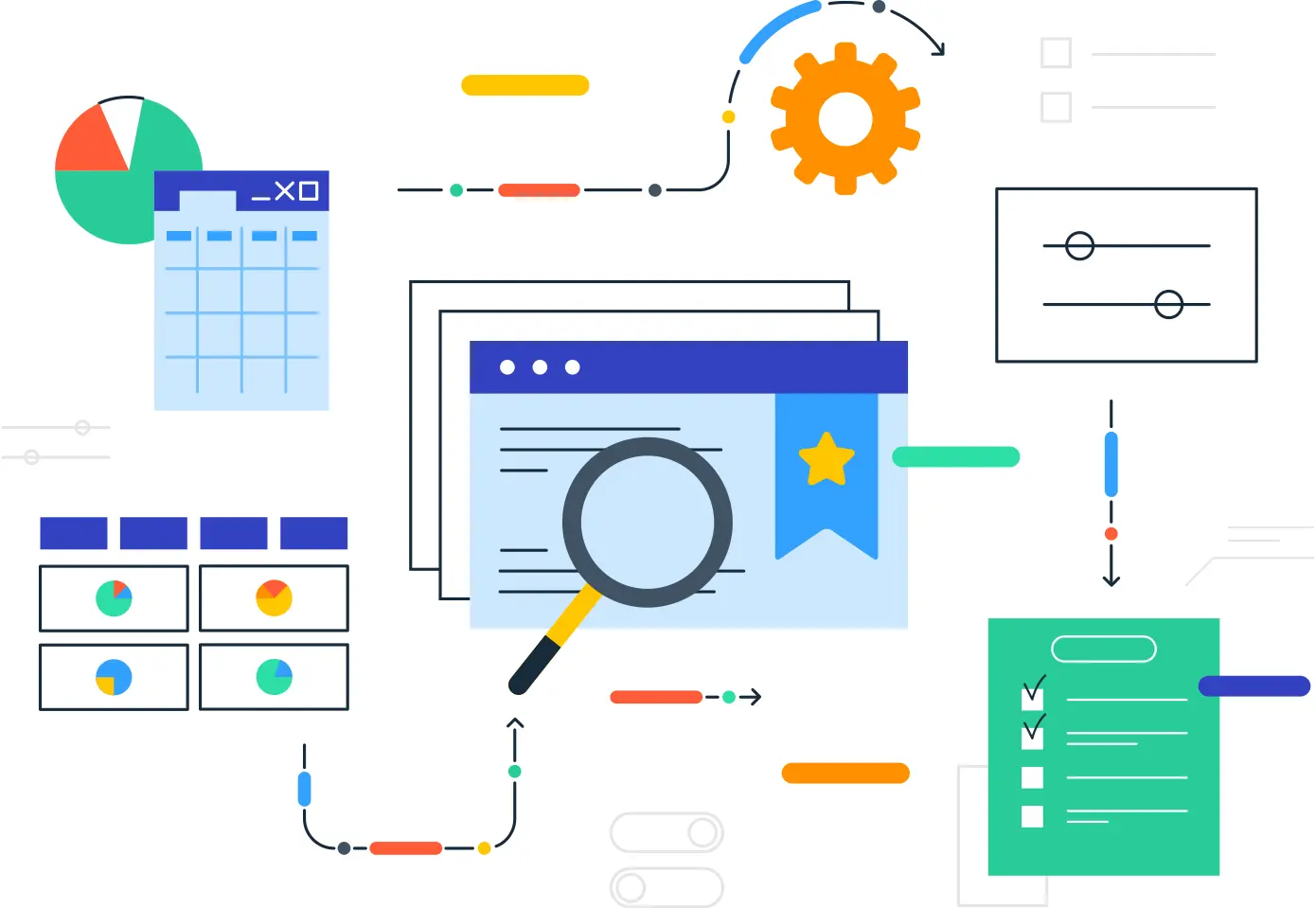
Get the Canonical Tag Checker
Download for free
Install Netpeak Spider
Choose Necessary Parameters
Start Crawl
Get the Canonical Tag Data
Key features of Netpeak Spider Canonical Tag Checker
Check out the main Spider Canonical Tag Checker and dig deeper into what value you will get with this tool.
Canonicalized Pages
This feature indicates canonicalized pages where a URL in the <link rel=”canonical” /> tag or the “Link: rel=”canonical” HTTP response header differs from the page url.
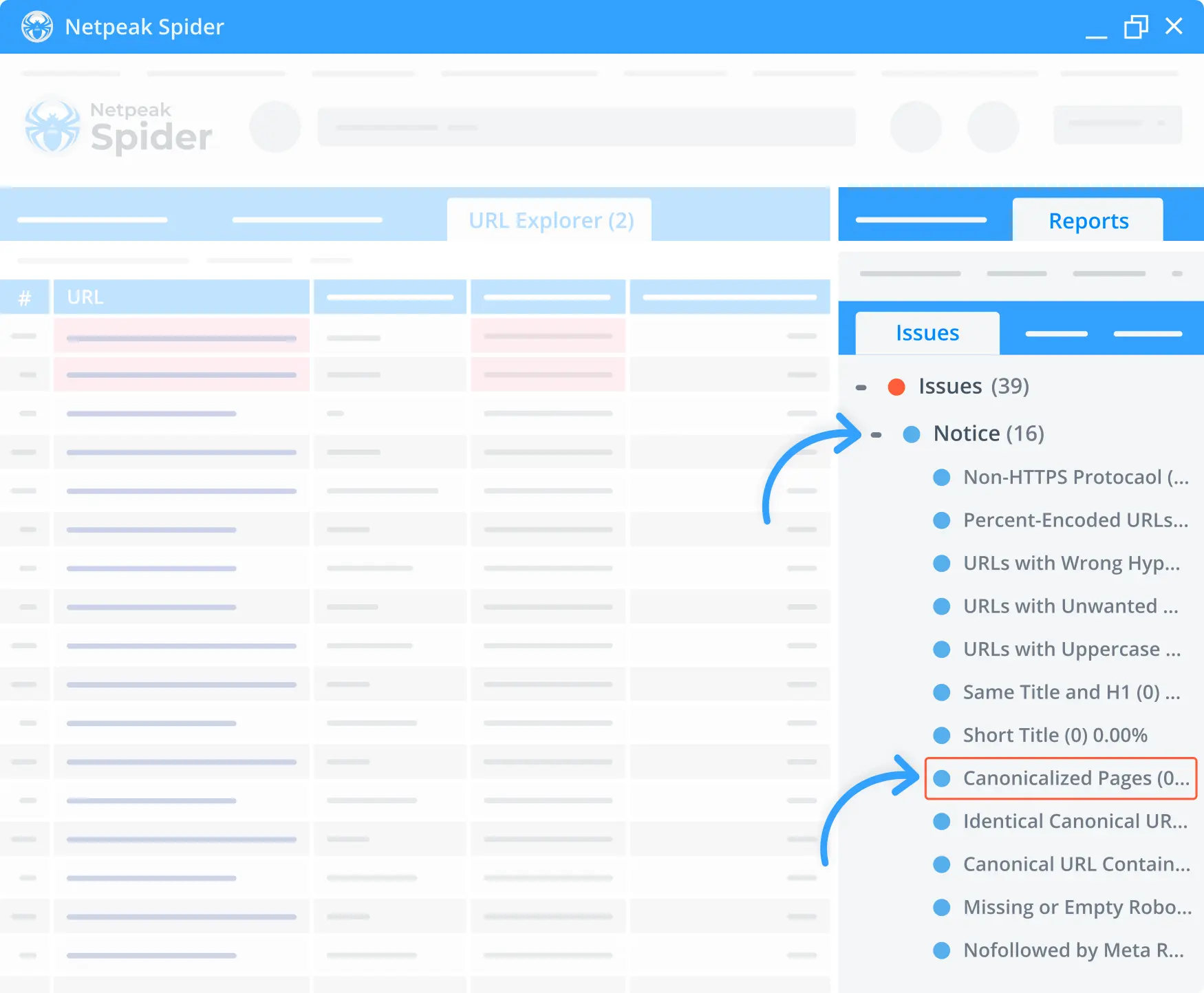
Canonicals
This feature checks the canonicals on your page - the number of URLs in a canonical chain starting from the current page. A check is performed automatically when crawling is paused and after it has been successfully completed. Checks can be canceled or started via the Analysis menu.
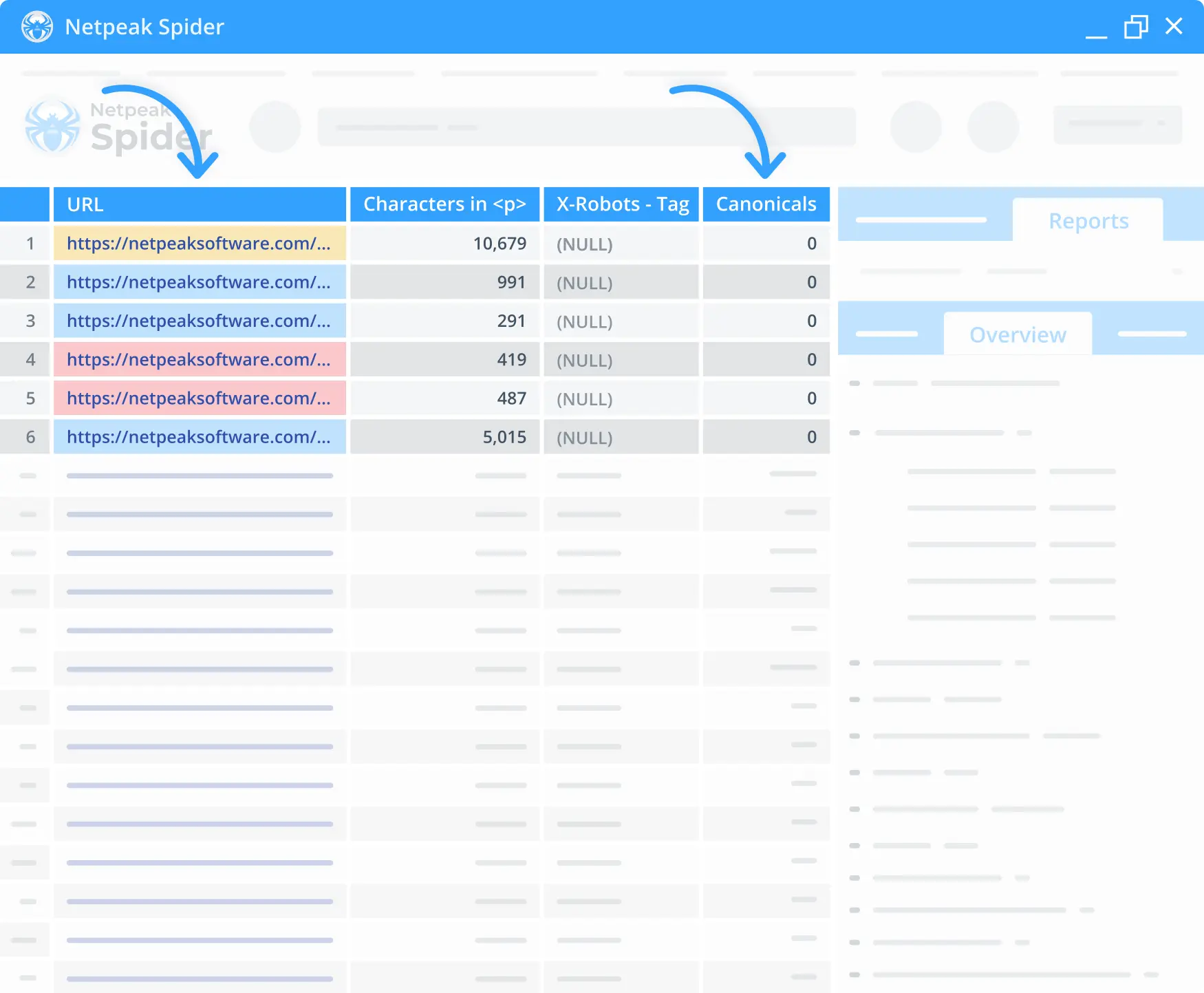
Non-Compliant Canonical URL
Netpeak Spider Canonical Checker indicates pages with a link to non-canonical URL in the <link rel=”canonical” /> tag or the “Link: rel=”canonical”.
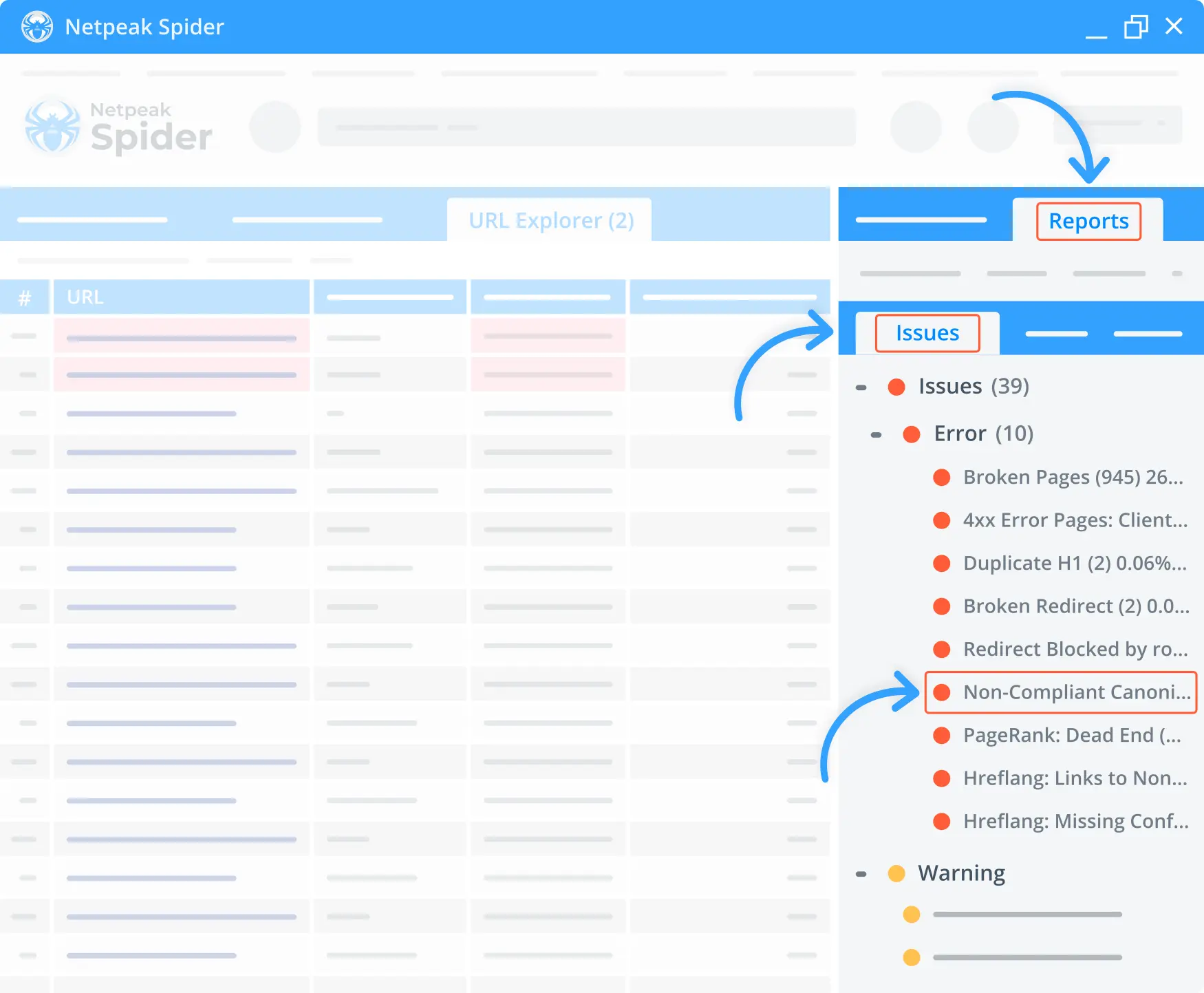
Canonical Chain
In this section, you’ll see pages starting a canonical chain (when a canonical URL contains a page address that links to another URL, the <link rel=”canonical” /> tag or the “Link: rel=”canonical” HTTP response header) or taking part in it. To view detailed information, open the additional table “Canonical” in the “Database” menu.
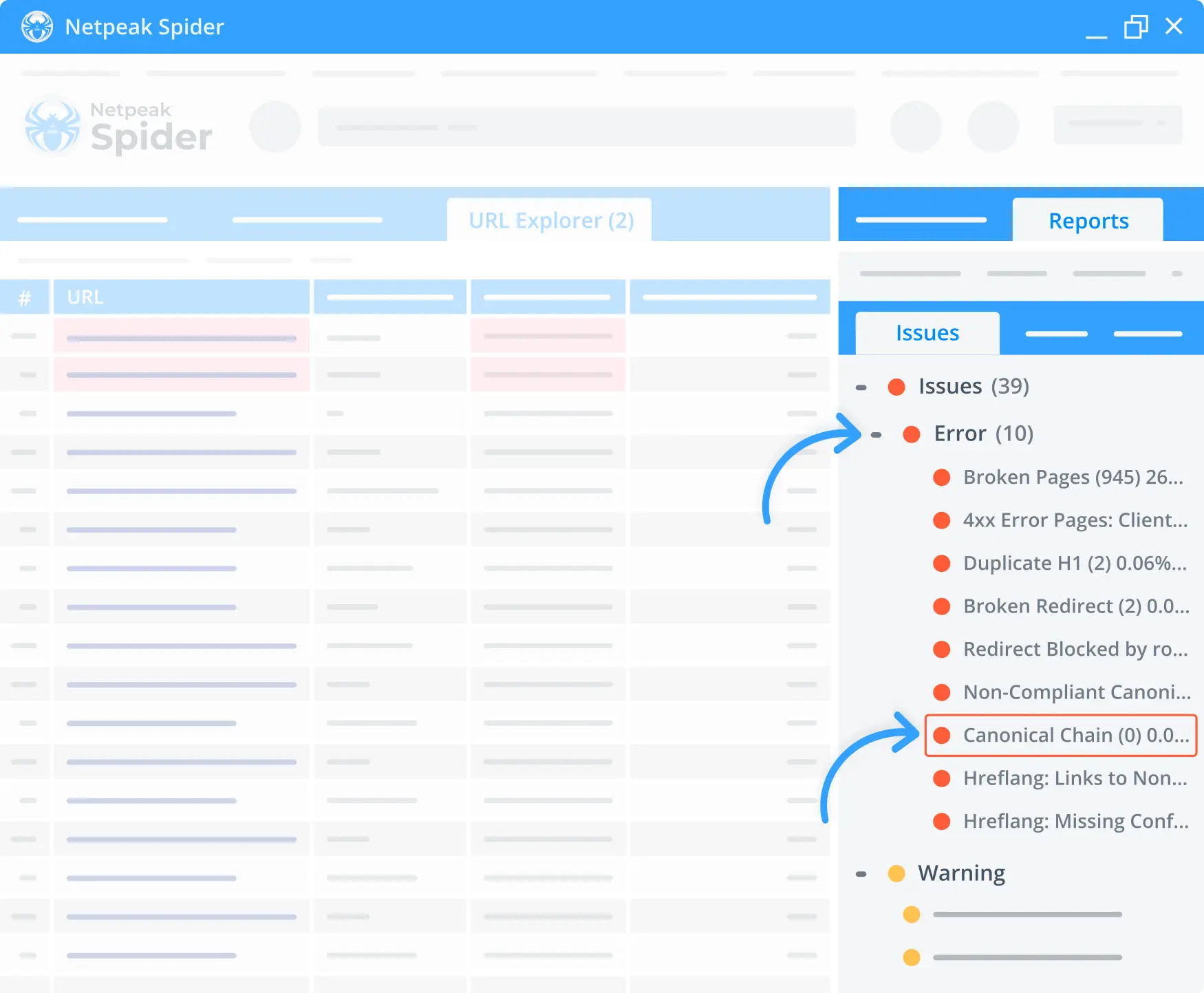
Canonicalized Pages
This notice indicates canonicalized pages where a URL in the <link rel=canonical”/>tag or the “Link: rel=”canonical” HTTP response header differs from the page URL.

Identical Canonical URLs
It indicates all pages with identical canonical URLs in the <link rel=”canonical” tag or the “Link: rel=”canonical” HTTP response header. URLs in this report are grouped by the “Canonical url” parameter.
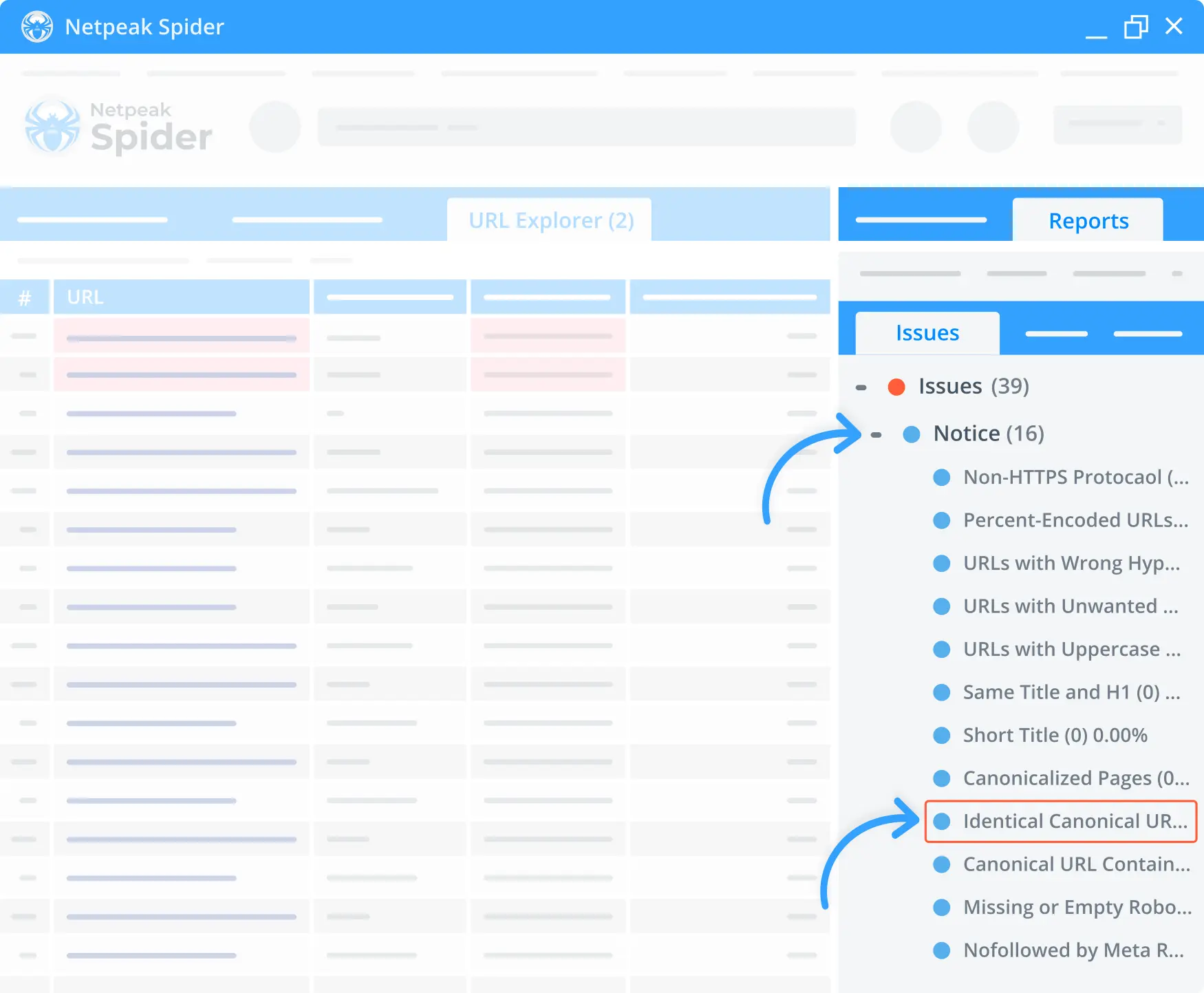
Getting a thorough SEO audit
Get an SEO analysis of your website and a list of all the issues you need to fix. You will get information about scraping, crawling, links, content, canonical links, head tags, as well as Google Analytics.
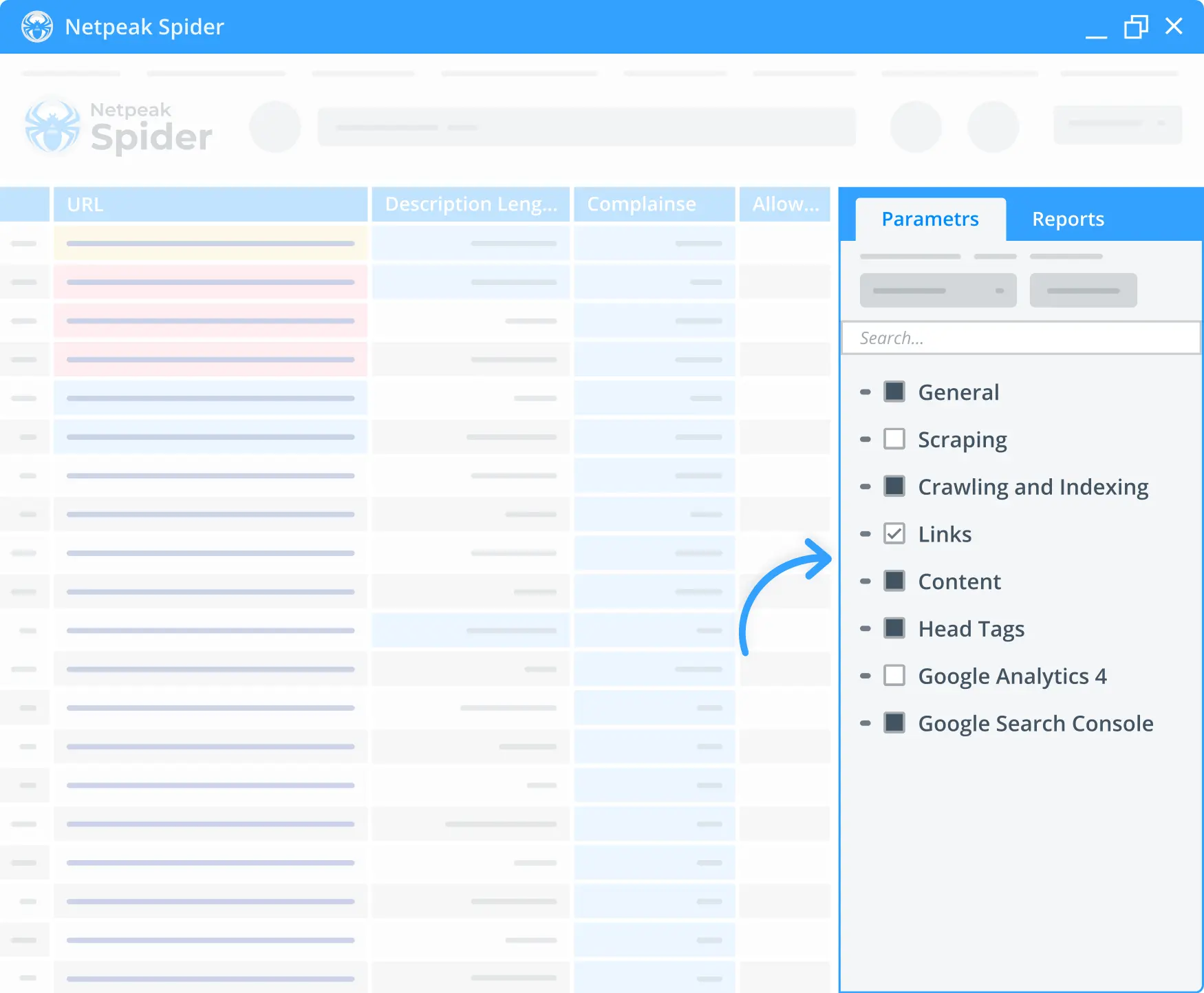
Manage your website content and improve your visibility with Netpeak Spider Canonical Checker
Want to manage your content in the right way? With Netpeak Spider Canonical Checker, you can improve your rankings by telling Google which content to prioritise. Start the free trial to get access to all the features.
Save up to 20%. Cancel anytime.
 How to use Netpeak Spider Canonical Checker
How to use Netpeak Spider Canonical Checker
1. Open Netpeak Spider - choose parameters - crawl the domain/page
Enter the URL of the page you want to analyze the canonical tags of; in the parameters, choose “canonical URL” and press the “Start” button to start the website crawl.
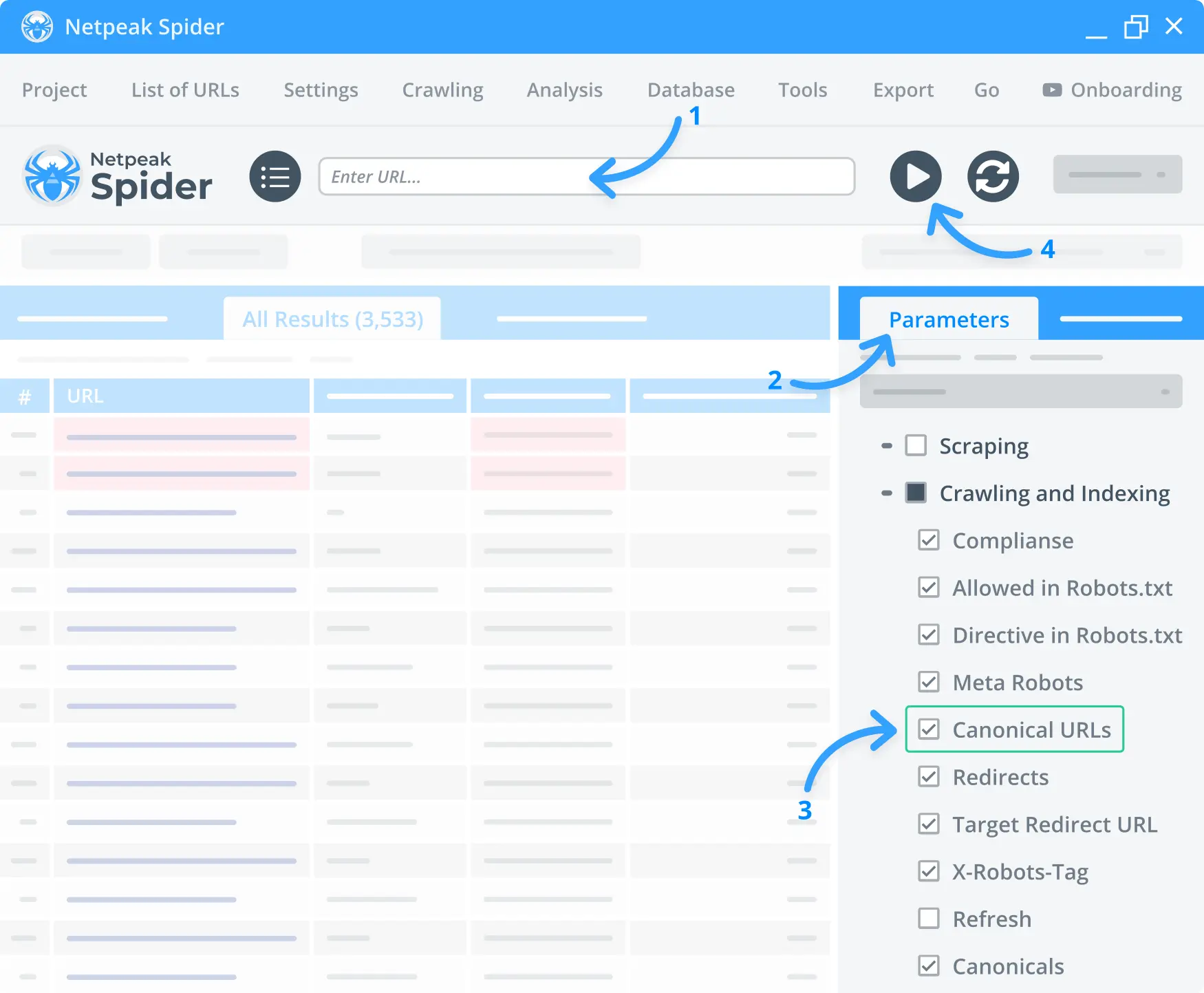
2. Find Canonical data
Enter the URL of the page you want to analyze and find the canonical URL in the “rel canonical url” section.
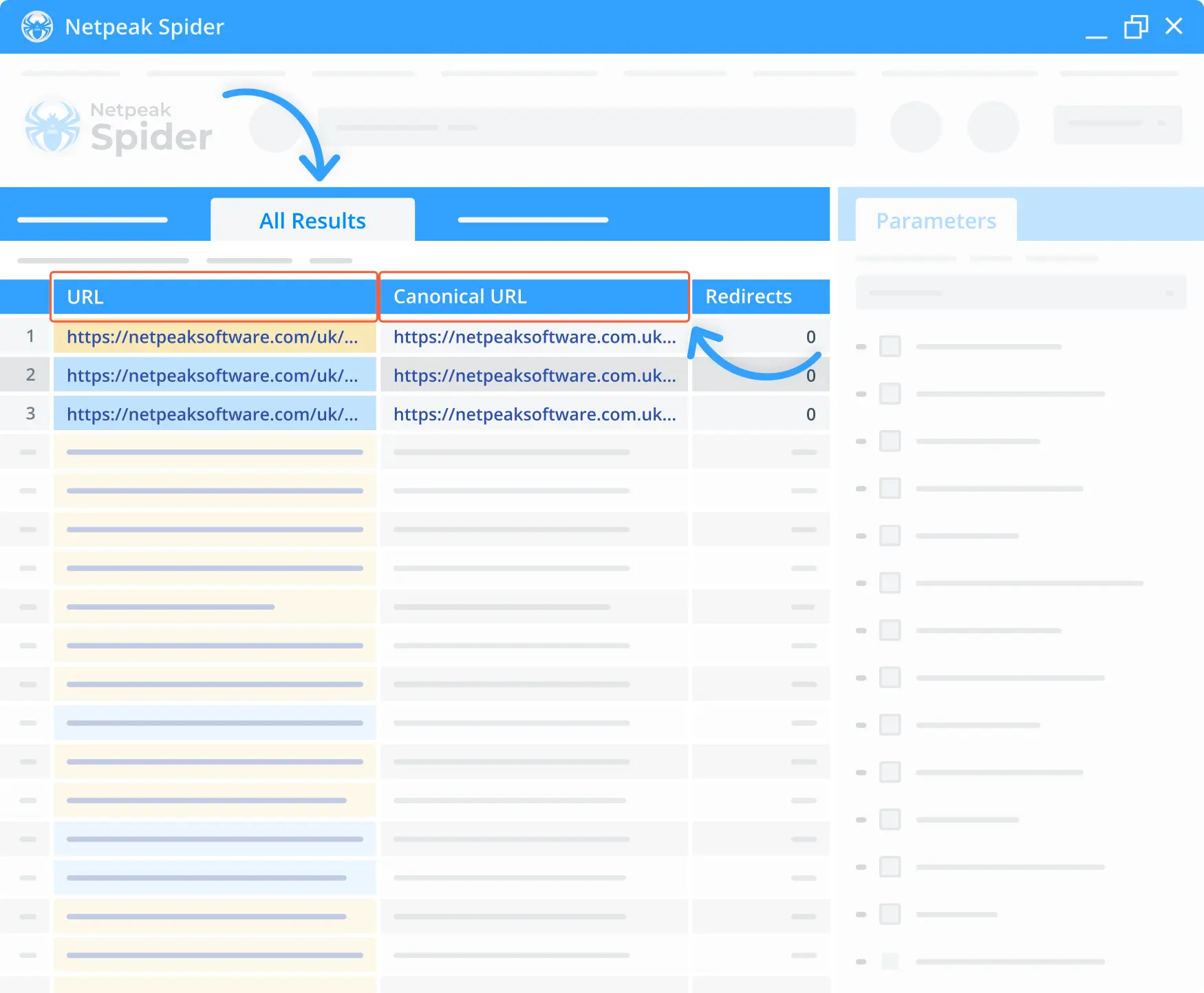
3. Export results
If you want to export the results of the canonical analysis, click the “Export” button and pick “Current table results”.
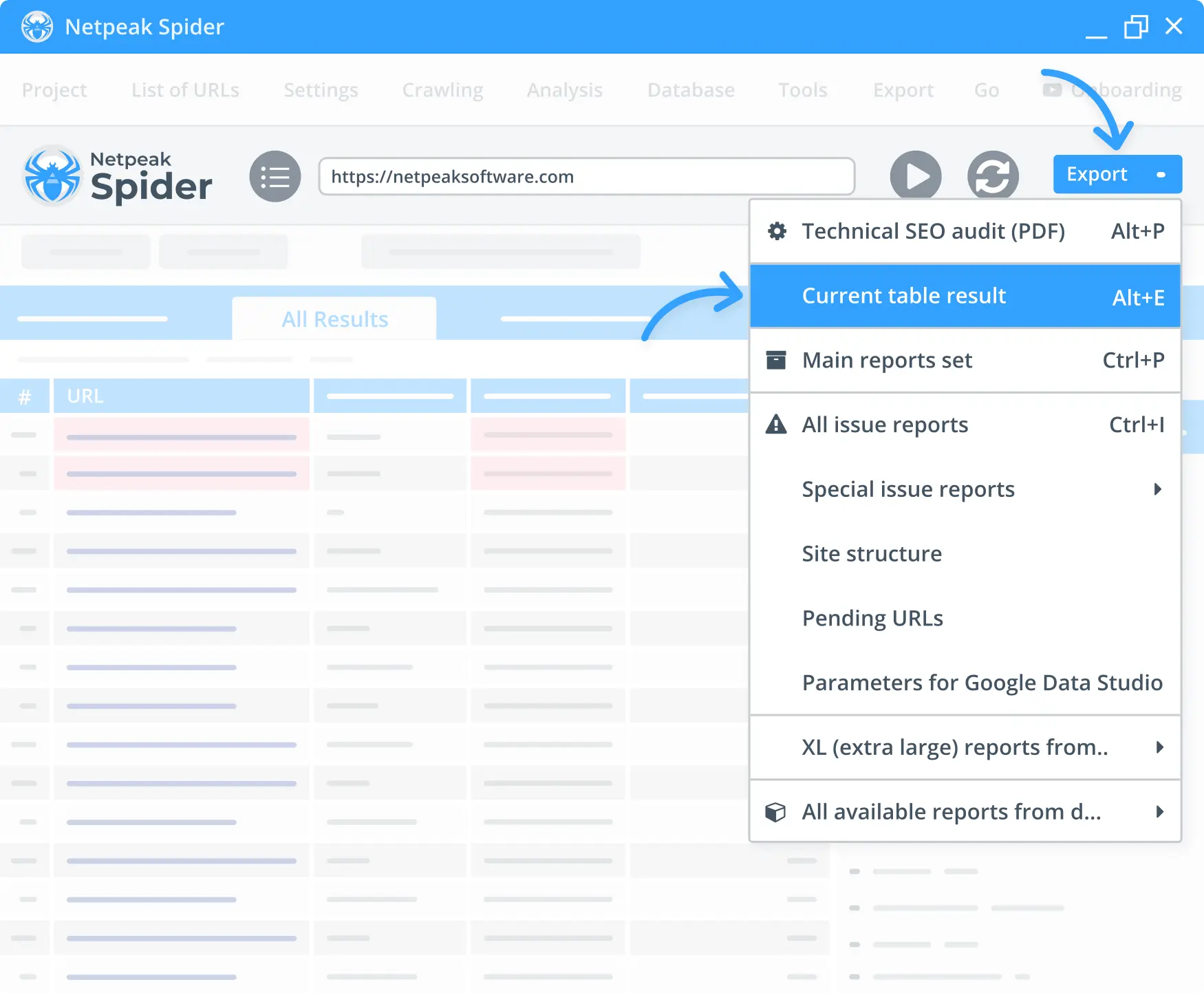
4. Find Canonical issues
In the Issues section, click the “Non-compliant Canonical url” tab to find canonical page issues.
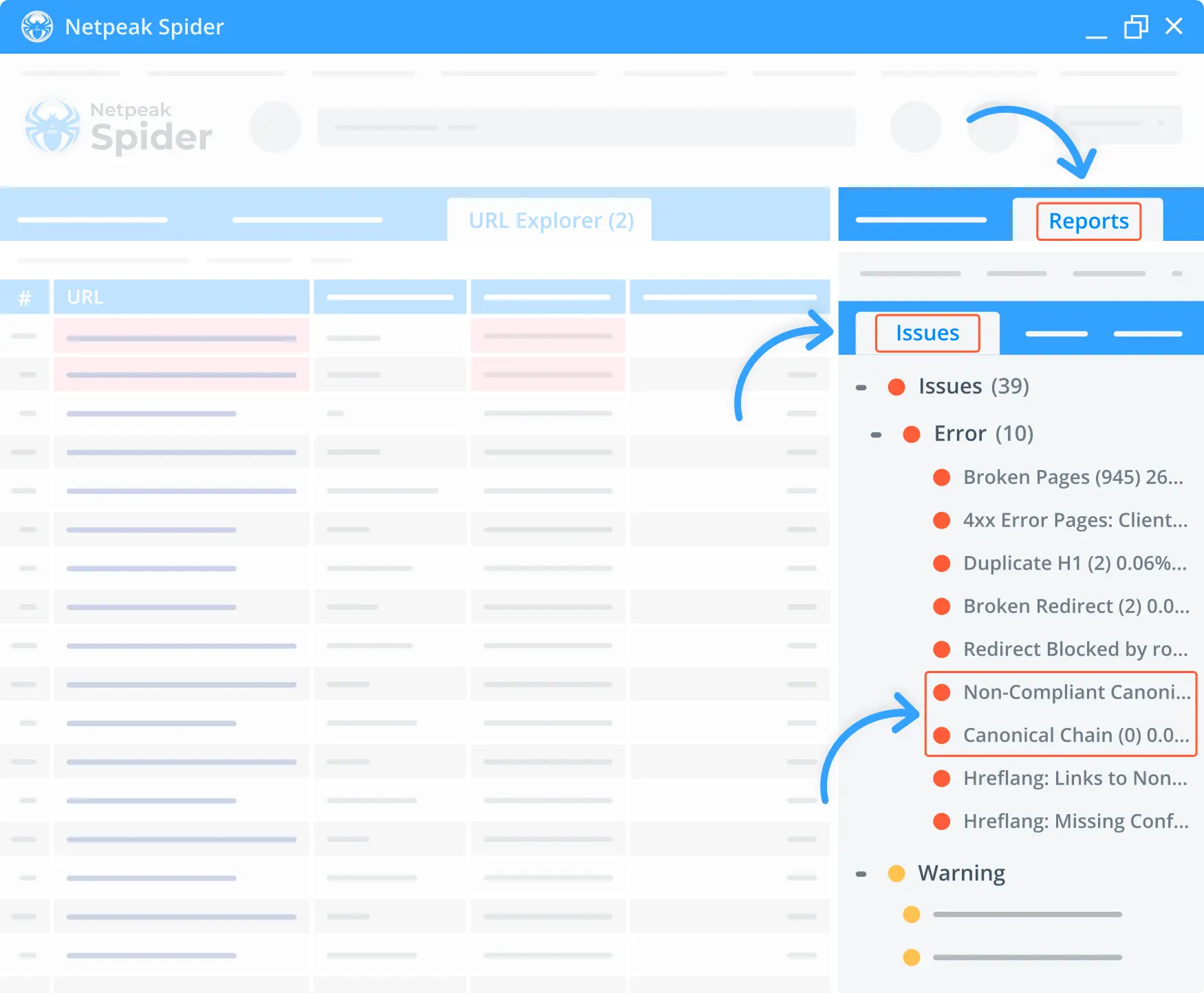
5. Export special issues report
In the reports tab, choose special issue reports and pick a non-compliant canonical link.
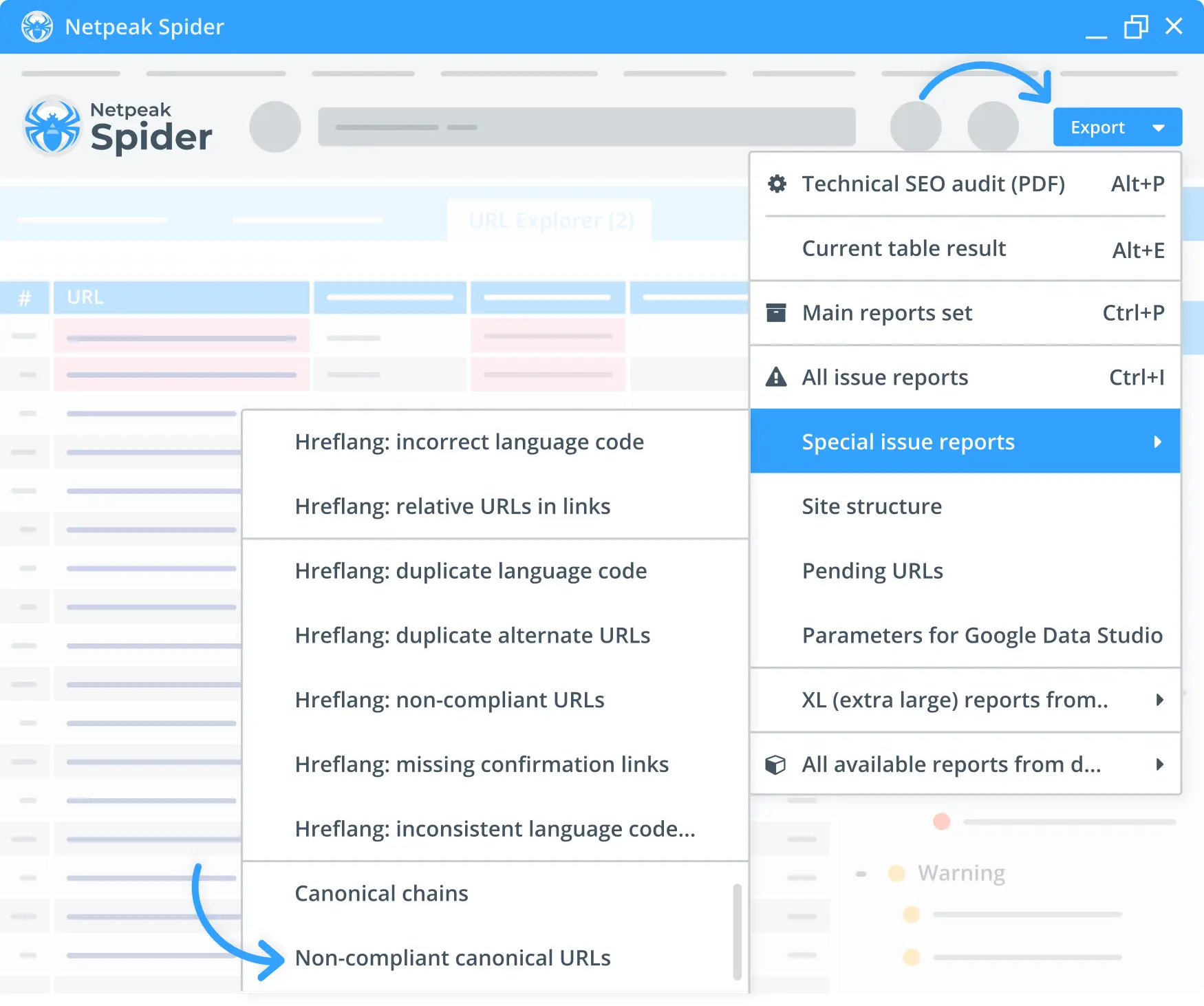
6. Analyze other issues reports on your website
With Netpeak Spider, you can also see reports on different issues on your website, such as broken pages, 4xx error pages, broken redirects, duplicate H1s, missing confirmation links, canonical pages, etc.
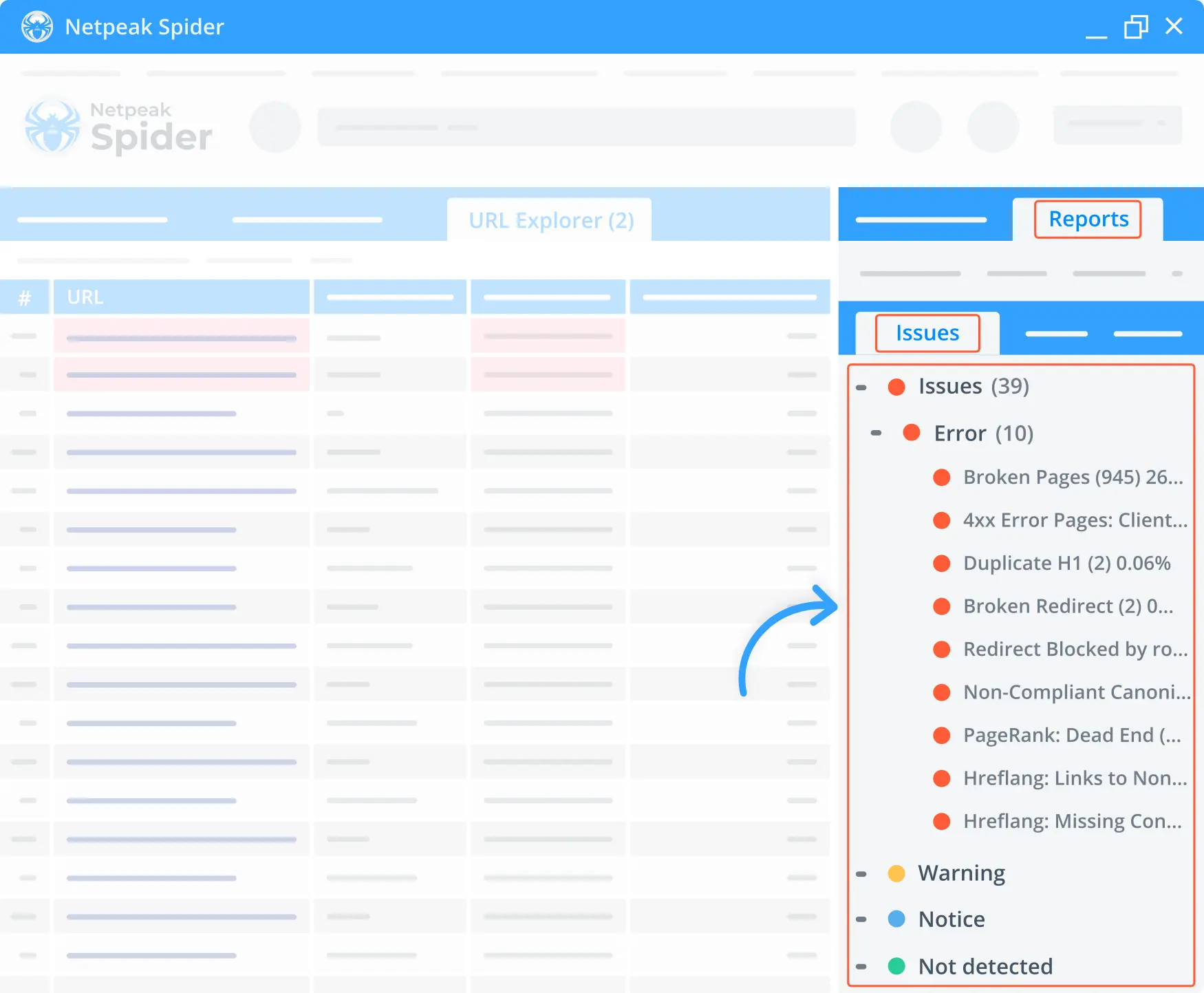






Why our clients choose Netpeak Spider
Our numerous awards and reviews speak for themselves. Learn what industry leaders and top specialists appreciate about our tools
See all reviewsMore features
Other features related to Technical Optimization
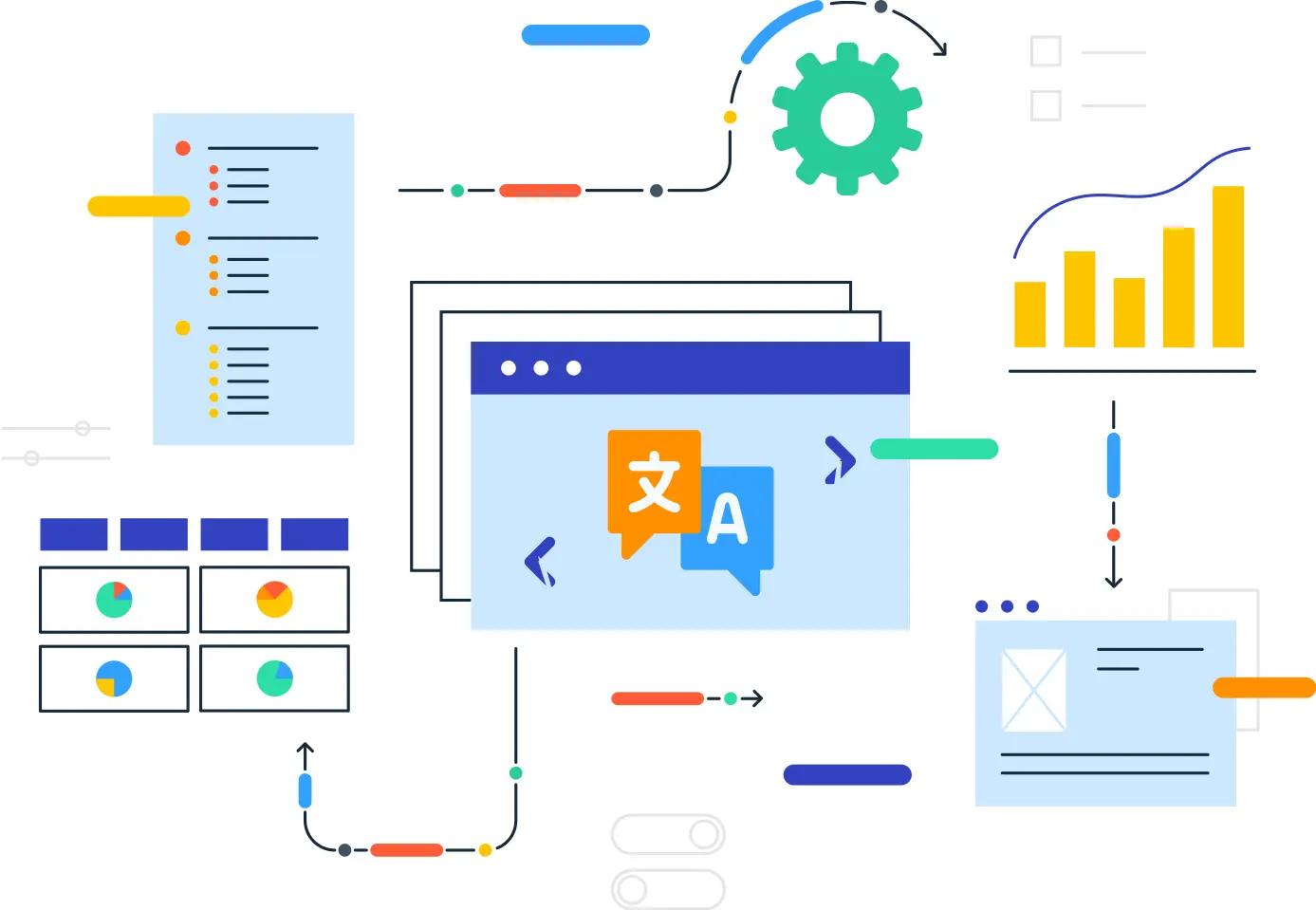
Hreflang Checker
Make your targeting campaigns more result-oriented with the help of Netpeak Hreflang Validator
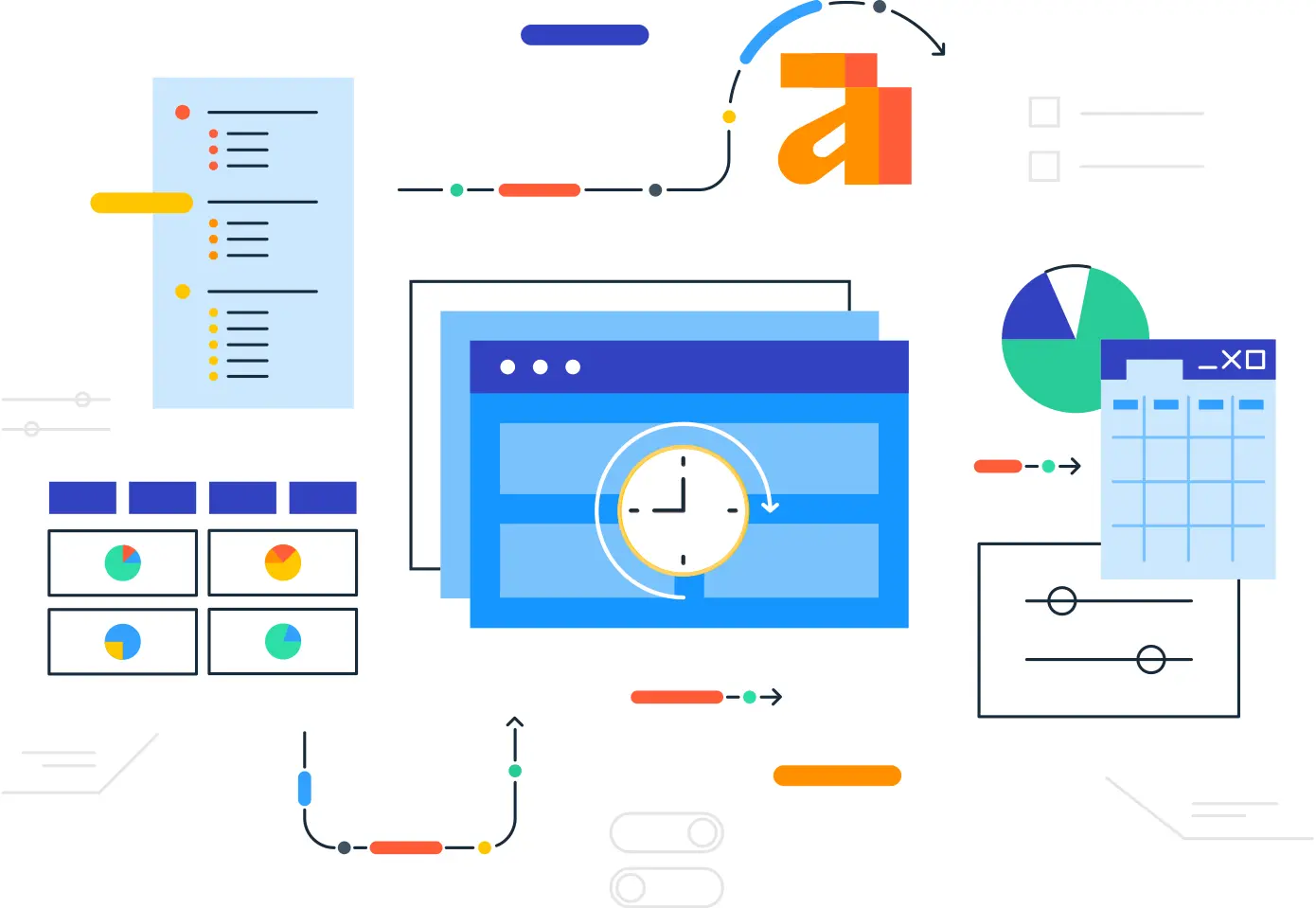
Web Page Size Checker
Check the size of web pages to improve the usability of your website, increase your website ranking, and provide a better experience for your audience.
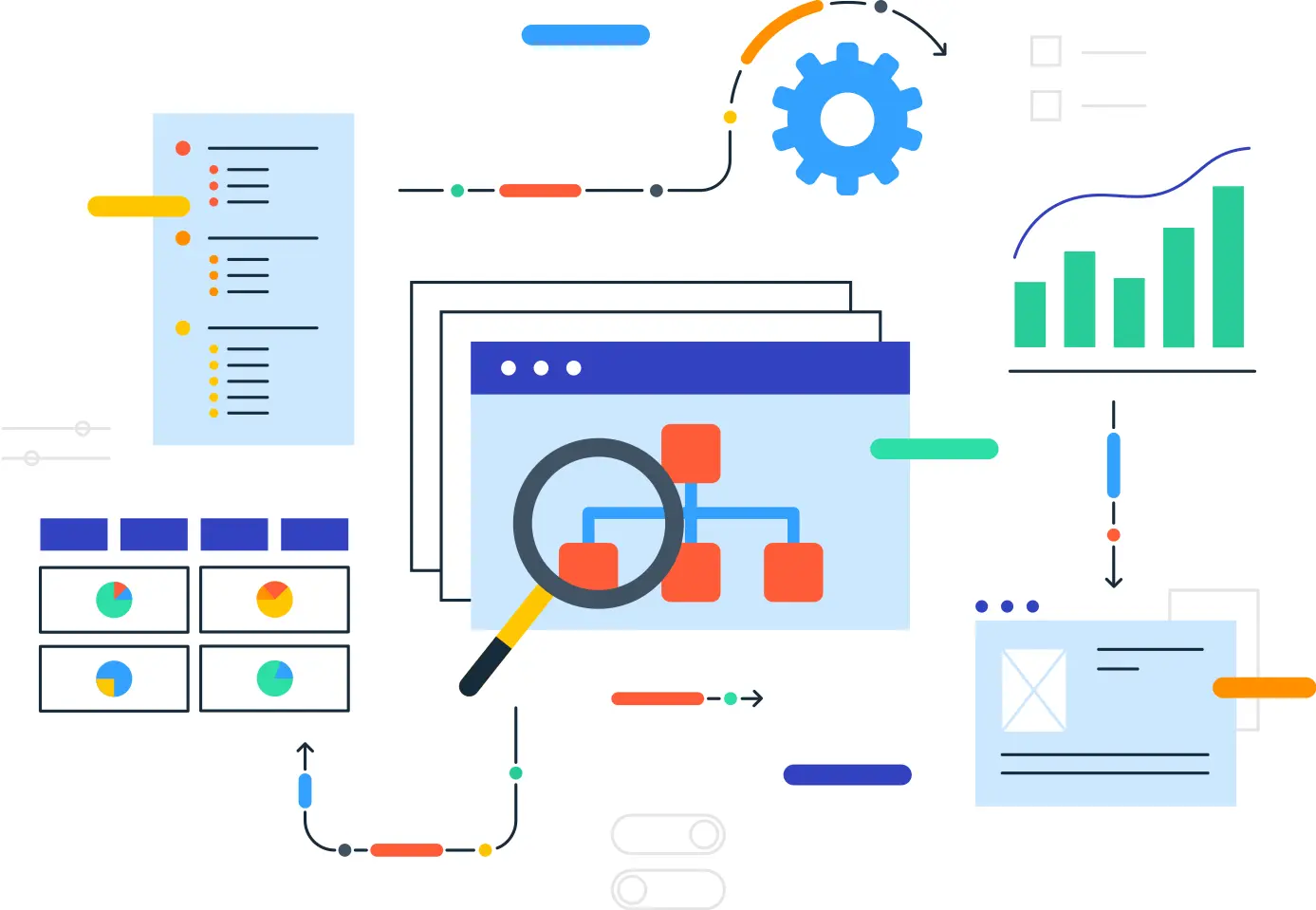
Sitemap Checker
How to use an XML sitemap validator? Learn how to check your website’s sitemap for issues with ease.




